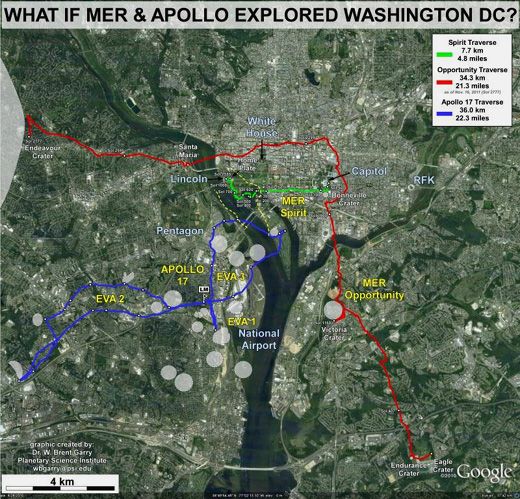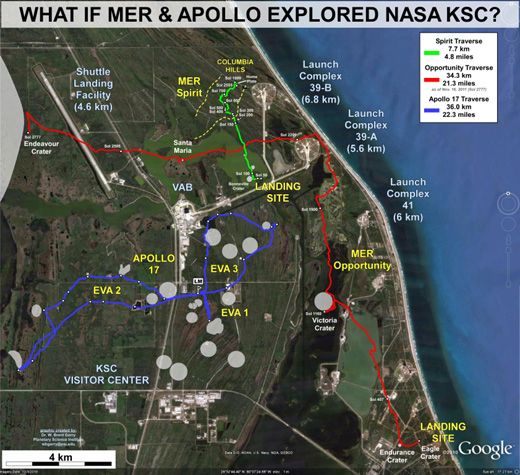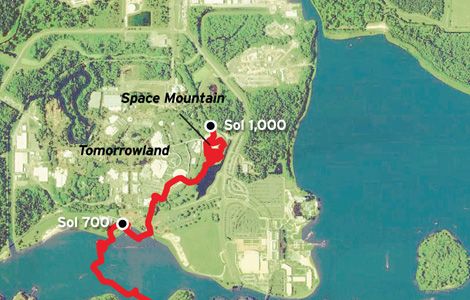If Spirit Had Gone to Disney World
For all its traveling, NASA’s last Mars rover only covered about the same ground as a familiar theme park.
/https://tf-cmsv2-smithsonianmag-media.s3.amazonaws.com/filer/SpriitDisney631.jpg)
In 2004, twin robots the size of golf carts began to traverse the Martian landscape. The so-called Mars Exploration Rovers landed near the Martian equator, halfway around the planet from each other. One of them, Spirit, spent the better part of a decade rolling through hills and poking around craters, far surpassing its original 90-day mission, until its luck ran out when it got stuck in a patch of soft soil and ran out of power. It sits there today.
During its long life on Mars, Spirit traveled just 4.8 miles. Brent Garry, a research scientist at the Planetary Science Institute in Tucson, Arizona, put Spirit’s short trip in perspective by superimposing the rover’s trail onto familiar places on Earth, like Walt Disney World in Orlando, Florida. The rover “landed” near the park’s main entrance, then rolled up through the Magic Kingdom before hunkering down in, let’s face it, the only appropriate place for a planetary explorer: Space Mountain. The area around the roller coaster is just about the size of the 295-foot-wide Home Plate, the rocky plateau that Spirit explored extensively during its last years and that became its final resting place. Its luckier twin, Opportunity, is still going, after a trip of more than 21 miles, which would have carried it across the National Mall in Washington, D.C., and far out into the Virginia suburbs.
“If aliens sent a robot to explore Earth and this is all they saw, it is a very limited view,” says Garry. “But with Mars, Spirit spent a lot of time at Home Plate mainly because it was a very diverse spot. We go in there with these questions, and [the rovers give us] a little bit of information.” Scientists can then extrapolate, Garry explains, applying the knowledge the Rovers provide to similar images collected by the productive Mars orbiters. In this way, Spirit’s reach extended far beyond Mickey’s domain.
See the gallery above for more maps comparing the rovers' journeys to familiar landmarks.
Heather Goss is an associate editor at Air & Space/Smithsonian.


